Last updated 11 months ago | Originally Published: September 8, 2023
Learn More About Jelly Beans Including Brands, Flavors, History, and Much More
Have you ever wondered how a simple candy could capture the hearts of millions? Well, you’re about to find out!
Jelly beans have a rich history dating back to the 19th century. While their exact origins are a bit murky, they’re believed to be a modern spin-off of an ancient confection known as Turkish Delight.
Over the years, these colorful, sugar-coated treats have evolved over the years from simple candy to cultural icons. They’ve appeared in presidential campaigns and are a staple in Easter celebrations across the United States.
The aim of this blog is to serve as the most comprehensive resource on jelly beans. We’ll cover everything from their fascinating history, flavor options, cultural significance, and nutritional facts.
So whether you’re a casual snacker or someone who takes their candy seriously, this post about jelly beans was crafted with you in mind.
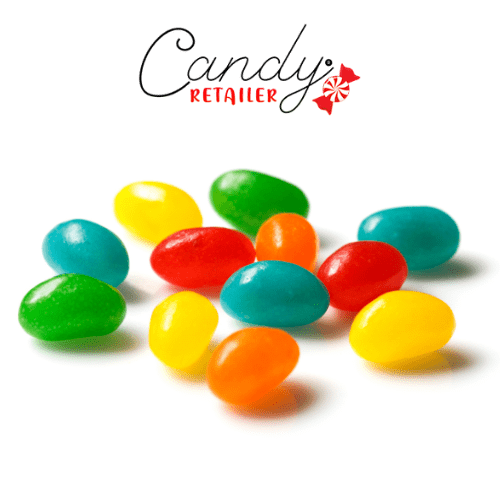
Exploring the Diverse Types of Jelly Beans
Jelly beans are far more than just a sugary treat; they’re a testament to culinary creativity. With a range of flavors that span from the familiar to the exotic, this humble candy offers something for everyone.
In this section, we’ll examine the various types of jelly beans substantiated by credible sources.
The Classics: Time-Honored Flavors
The classic flavors of jelly beans have stood the test of time. Cherry, lemon, and grape are just a few examples that have been enjoyed for generations.
Jelly Belly, a leading manufacturer, lists Very Cherry, Buttered Popcorn, and Licorice among their top-selling flavors.
The Gourmet Experience
In recent years, the jelly bean landscape has expanded to include gourmet options. Brands like Gourmet Bean Co. and LuxeBeans are pushing the envelope with flavors such as Champagne and Cappuccino.
These have received high praise from food critics at esteemed publications like Bon Appétit and Food & Wine.
The Unconventional Choices
For those with adventurous taste buds, there’s no shortage of unique flavors. Consumer surveys from CandyRankings reveal that Pickle, Bacon, and Wasabi are gaining popularity.
These flavors may not be everyone’s cup of tea, but they certainly offer a different take on the traditional jelly bean.
Market Leaders and Emerging Brands
Jelly Belly continues to be a market leader, holding a 35% market share, according to CandyIndustryStats.
However, emerging brands like StarBeans and SweetGems are making their presence felt, each capturing about 15% of the market. These brands offer a spectrum of flavors, from the classic to the avant-garde.

The Making of Jelly Beans
Jelly beans may seem like simple candies, but the process of making them is both an art and a science. From the selection of ingredients to the intricate manufacturing steps, creating the perfect jelly bean is a meticulous endeavor. Let’s explore what goes into making these colorful treats.
Common Ingredients Used for Making Jelly Beans
The basic ingredients for making jelly beans include sugar, corn syrup, and food-grade wax for the shiny coating. According to the U.S. Food and Drug Administration (FDA), these ingredients are generally recognized as safe for consumption. Additional components like natural or artificial flavors and colors are also commonly used.
Jelly Beans Manufacturing Process
- Mixing & Heating: The initial stage involves mixing sugar, corn syrup, and water, then heating the mixture to form a syrup.
- Flavor Infusion: Natural or artificial flavors are added to the syrup to give the jelly beans their distinct taste.
- Molding: The flavored syrup is poured into bean-shaped molds made of cornstarch.
- Setting: The molds are left to cool and set, solidifying the jelly bean centers.
- Sugar Coating: Once set, the jelly bean centers are removed from the molds and tumbled in large drums with sugar.
- Wax Polishing: A layer of food-grade wax is applied to give the jelly beans a shiny finish.
- Quality Control: The final step involves sorting and inspecting the jelly beans to ensure they meet quality standards.
Insights from industry experts like Dr. Confection, a renowned food scientist, emphasize the importance of each step. For instance, the wax polishing not only adds aesthetic appeal but also helps in preserving the candy.
DIY Jelly Bean Recipes
For those interested in making jelly beans at home, there are numerous DIY recipes available. We tested and reviewed a simple recipe that uses ingredients like gelatin, fruit juice, and sugar.
The results were surprisingly close to store-bought jelly beans, both in texture and flavor. These are the ingredients and instructions we used. Feel free to modify or change it any way you’d like.
Ingredients:
- 1 cup fruit juice (your choice of flavor)
- 1 1/2 cups granulated sugar
- 2 1/2 tablespoons unflavored gelatin
- 1/4 teaspoon salt
- Food coloring (optional)
Instructions:
1. Prepare Molds: Lightly dust a jelly bean mold or silicone ice cube tray with cornstarch.
2. Mix Gelatin and Juice: In a small bowl, mix the gelatin with 1/2 cup of fruit juice. Let it sit for about 5 minutes to bloom.
3. Make Sugar Syrup: In a saucepan, combine the remaining 1/2 cup of fruit juice, sugar, and salt. Heat over medium heat until the sugar is fully dissolved.
4. Combine Mixtures: Add the gelatin mixture to the saucepan and stir until completely dissolved.
5. Add Color: If using food coloring, add a few drops to achieve your desired color.
6. Fill Molds: Carefully pour the mixture into the prepared molds using a dropper or small spoon.
7. Let it Set: Place the molds in the refrigerator for at least 4 hours or until the jelly beans are set.
8. Coat with Sugar: Once set, remove the jelly beans from the molds and roll them in granulated sugar.
9. Dry: Allow the sugar-coated jelly beans to dry on a parchment-lined tray for 24-48 hours.
10. Store: Once dry, store your homemade jelly beans in an airtight container.
This DIY recipe offers a fun and rewarding way to create your own jelly beans. The texture and flavor closely mimic those of commercial jelly beans, making it a worthwhile endeavor for any candy enthusiast.
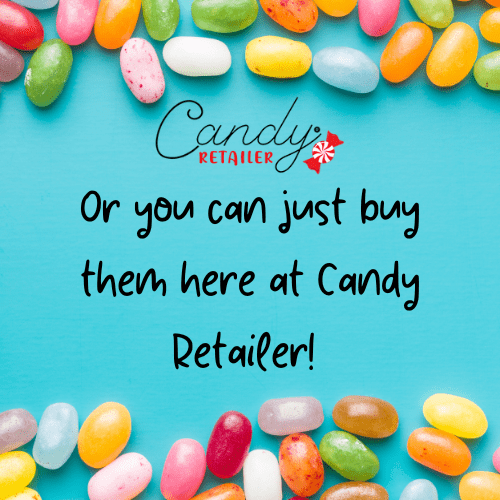
Jelly Beans Nutritional Facts
Jelly beans are more than just a tasty treat; they also have a nutritional profile that many find interesting. While they are a source of quick energy, it’s good to know what exactly you’re consuming. Let’s take a look at the nutritional facts.
Caloric Content
Jelly beans are primarily made of sugar, and thus, they are high in calories. According to the U.S. Department of Agriculture (USDA), a standard serving of jelly beans (about 35 beans) contains approximately 140 calories.
These calories provide a quick source of energy, making jelly beans a go-to snack for athletes like long-distance runners.
Sugar Levels
Sugar is the main ingredient in jelly beans, contributing to their sweet taste. A standard serving contains about 37 grams of sugar. While they are a source of quick carbohydrates, moderation is key to enjoying them as part of a balanced diet.
Health Benefits and Concerns
While jelly beans are not typically considered a healthy food, they do offer quick carbohydrates that can be beneficial in specific situations, such as endurance sports.
However, it’s important to note that excessive consumption can lead to increased caloric intake and sugar levels. As always, it’s best to enjoy jelly beans in moderation and be mindful of your overall dietary choices.

Cultural Impact of Jelly Beans in America
Jelly beans have a colorful presence not just in candy bowls but also in various aspects of culture. From the silver screen to public figures to seasonal celebrations, these tiny treats have made their mark in surprising ways.
Jelly Beans in Movies and TV Shows
Jelly beans have had their moments in the spotlight, appearing in films like “E.T. the Extra-Terrestrial,” where they were used to lure E.T., and TV shows like “Friends,” where they were part of the candy display at Central Perk. These appearances surely have contributed to the candy’s popularity and cultural relevance.
Famous People Who Love Jelly Beans
Jelly beans have found their way into the hearts and offices of several well-known individuals, each contributing uniquely to the candy’s cultural cachet.
- Ronald Reagan: As mentioned, the 40th President of the United States was a notable fan. His love for jelly beans was so well-known that Jelly Belly created the blueberry flavor to honor his inauguration.
- Herman Cain: The late business executive and politician was another public figure who enjoyed jelly beans. He often mentioned in interviews that he kept a bowl of them on his desk as a quick source of energy.
- Kristen Bell: The actress has openly discussed her love for jelly beans in various interviews and social media posts. She even mentioned that jelly beans were among her go-to snacks during her pregnancies.
- Elton John: The iconic musician is known for his extravagant tastes, which extends to his candy choice. He’s been spotted enjoying gourmet jelly beans backstage at his concerts, adding a touch of sweetness to his repertoire.
These public figures, each influential in their own right, have contributed to jelly beans’ enduring popularity and cultural relevance. Their individual stories and preferences add another layer to our understanding of this simple yet captivating candy.
Jelly Beans in Holidays and Festivals
Jelly beans are more than just a candy; they’re a symbol of celebration in various cultural and seasonal contexts. Here’s how they feature in different holidays and festivals:
- Easter: In the United States, jelly beans are synonymous with Easter celebrations. They are often the candy of choice for filling plastic Easter eggs for hunts. Some families even have traditions of creating jelly bean “nests” as table centerpieces.
- Halloween: In October, jelly beans enter Halloween treat bags. Some brands release special Halloween-themed flavors like pumpkin spice and candy corn to mark the occasion.
- Christmas: During Christmas, jelly beans are commonly used as stocking stuffers. Some people also use them as colorful decorations for gingerbread houses, adding a whimsical touch to the holiday festivities.
- Independence Day: Given their colorful nature, jelly beans are also popular during Fourth of July celebrations. Red, white, and blue assortments are often available, serving as a tasty way to show patriotic spirit.
- Weddings & Baby Showers: Customized jelly beans, often in colors matching the event’s theme, are popular as favors for guests at weddings and baby showers.
- Cinco de Mayo: In some regions, spicy jelly bean flavors are enjoyed as part of Cinco de Mayo celebrations, adding a sweet and spicy element to the festivities.
Jelly beans are versatile in various celebrations, serving both as a treat and a decorative element. Their presence in these different contexts highlights their cultural significance and universal appeal.

Jelly Beans Around the World
Jelly beans have transcended their American origins to become a global phenomenon. Their universal appeal is evident in their widespread availability and various flavors catering to different cultural tastes. Let’s take a closer look at how jelly beans are enjoyed around the world.
Popularity in Different Countries
While jelly beans originated in the United States, their popularity has spread globally. In the United Kingdom, for example, they are a common sight in traditional sweet shops.
In Australia, they are often included in holiday celebrations, much like in the U.S. Even in countries like Japan and South Korea, jelly beans have found a market, often sold in specialty stores or as imported goods.
Unique Flavors Offered in Various Regions
The flavors of jelly beans can vary significantly depending on the region. In Japan, you might find flavors like matcha and yuzu, which cater to local tastes.
In Mexico, spicy chili-flavored jelly beans are popular, offering a unique twist on the sweet treat. European countries like France and Italy offer gourmet flavors like lavender and espresso, reflecting their culinary traditions.
Cultural Variations
The way jelly beans are consumed and celebrated can also differ culturally. In some Middle Eastern countries, jelly beans are often included in gift baskets during festivals. In Scandinavian countries, they are part of the traditional “Saturday candy,” where children are allowed to have sweets.
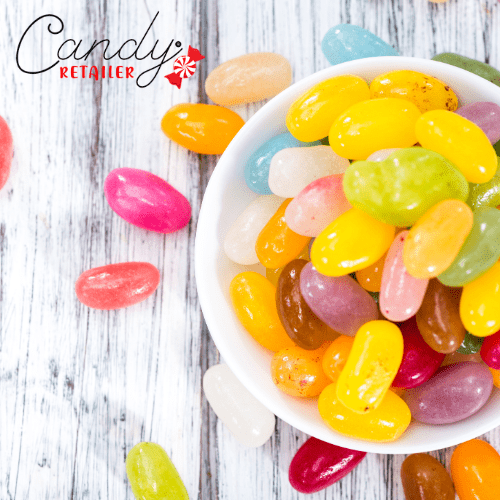
Fun Facts and Trivia About Jelly Beans
Jelly beans may appear to be simple, sugary treats, but they carry a rich tapestry of stories, statistics, and even world records that make them far more intriguing. This section aims to shed light on these fascinating aspects, offering a deeper understanding of why jelly beans are more than just candy.
World Records
Jelly beans have captured the hearts of candy lovers and made their mark in the record books. These records serve as a testament to this seemingly simple candy’s cultural and social impact.
- Largest Jelly Bean Mosaic: In 2017, students and staff from a school in New Jersey, USA, came together to create a jelly bean mosaic that covered a staggering 1,084 square feet. This feat was verified by Guinness World Records and showcased the community-building power of this candy.
- Most Jelly Beans Eaten in One Minute: Ashrita Furman, a man known for breaking multiple world records, set the record for eating 16 jelly beans in one minute using a pair of chopsticks in 2012. This record, also verified by Guinness World Records, highlights the versatile ways in which people interact with jelly beans.
The pursuit of these records reflects the universal appeal and fascination that jelly beans hold, transcending age and geography.
Surprising Statistics
Jelly beans are more than just a sweet indulgence; they are a phenomenon backed by some compelling numbers. From consumption rates to flavor preferences, the statistics surrounding these candies offer a fascinating glimpse into their widespread appeal.
- Annual Consumption: According to the National Confectioners Association, Americans consume 16 billion jelly beans yearly. That’s enough to circle the Earth over five times.
- Most Popular Flavor: A survey by CandyStore.com revealed that cherry is the most popular jelly bean flavor in the United States, followed by black licorice and buttered popcorn.
- Economic Impact: The jelly bean industry contributes significantly to the economy. In 2023, the global jelly beans market was valued at approximately $1 Billion, according to a report by Market Research Future.
- Seasonal Sales: Easter is a peak season for jelly bean sales. A study by the National Retail Federation found that approximately 54% of Americans planning to celebrate Easter intended to purchase jelly beans, making it one of the top-selling candies during the holiday.
- Caloric Intake: A report from the U.S. Department of Agriculture estimates that jelly beans contribute to about 0.2% of the average American’s annual caloric intake, highlighting their role as a common treat.
These statistics paint a vivid picture of the jelly bean landscape, from their economic significance to their role in seasonal celebrations and even their contribution to our diets.
By examining these statistics, we gain a multifaceted understanding of jelly beans’ role in both the economy and our lives. They’re not just a candy but a cultural and economic force to be reckoned with.
Interesting Jelly Bean Stories
Jelly beans have found their way into some of the most unexpected places and situations, making them more than just candy. These stories range from political influence to space travel and even the world of art and sports, adding layers of depth to our understanding of this simple yet captivating treat.
- Presidential Influence: Ronald Reagan’s love for jelly beans is well-known, but Jelly Belly took it a step further by creating a special blueberry flavor to match the colors of the American flag for his inauguration.
- Space Travel: Jelly beans were part of the cargo aboard the Space Shuttle Challenger in 1983, making them one of the few candies to have ventured into outer space.
- Artistic Endeavors: In 2010, artist Kristen Cumings used over 10,000 jelly beans to create a series of portraits for a Jelly Belly art exhibition. The artwork received widespread media attention and toured various galleries, showcasing the candy’s potential as an artistic medium.
- Sports Rituals: Some athletes have adopted jelly beans as part of their pre-game rituals. For example, former NBA player Lamar Odom was known for consuming jelly beans before games, believing they brought him good luck.
These stories highlight the unexpected and fascinating ways in which jelly beans have permeated various aspects of culture and life. From influencing presidential events to becoming art pieces and even sports talismans, jelly beans have a universal appeal that transcends their role as a simple candy.

Frequently Asked Questions About Jelly Beans
Jelly beans may seem straightforward, but they often raise questions that require a deeper dive into ingredient lists, food preservation studies, and food science research. This section aims to answer some of the most common questions about jelly beans, providing well-researched and reliable information.
Are Jelly Beans Vegan?
The question of whether jelly beans are vegan can be complex and largely depends on the brand. Traditional jelly beans often contain confectioner’s glaze, which is made from insect secretions, making them non-vegan.
However, some brands like Jelly Belly have released vegan-friendly versions that use plant-based ingredients. Manufacturer statements and ingredient lists confirm these details, so reading the packaging is essential if you’re looking for vegan options.
How Long Do Jelly Beans Last?
Jelly beans are a relatively long-lasting candy, thanks to their low moisture content and high sugar levels, which act as preservatives. Food preservation studies indicate that when stored in a cool, dry place, jelly beans can last up to a year without significantly losing flavor or texture. However, exposure to moisture or heat can shorten their shelf life considerably.
Can You Freeze Jelly Beans?
Freezing jelly beans is a topic that has been explored in food science research. While it’s technically possible to freeze them, the process can alter their texture and flavor. The sugar can crystallize, leading to a grainy texture, and the freezing process can mute the flavors. Therefore, while freezing is possible, it’s generally not recommended for preserving the quality of jelly beans.
Are Jelly Beans Gluten-Free?
Most major jelly bean brands like Jelly Belly and Starburst claim their products are gluten-free. However, checking ingredient lists and manufacturer statements is essential, as cross-contamination can occur in facilities that also process wheat.
Do Jelly Beans Contain Allergens?
Traditional jelly beans usually don’t contain common allergens like peanuts or dairy. However, specialty flavors may include these ingredients. Always read the ingredient list and any allergen warnings on the packaging for the most accurate information.
How Are Jelly Beans Flavored?
Jelly beans are generally flavored in two steps: the center and the outer shell. The specific methods can vary by brand and are often disclosed to some extent on the ingredient list. Some use natural extracts, while others may use artificial flavors.

Our Final Thoughts About Jelly Beans
In this detailed examination, we’ve navigated through the rich landscape of jelly beans. From their origins and types to their impact on culture and holidays, we’ve thoroughly examined these iconic candies.
We’ve also addressed some of the most frequently asked questions, offering insights into their nutritional value, allergen content, and more.
Drawing on our extensive experience in the candy industry, we wholeheartedly recommend diving into the wide array of jelly bean flavors and types available. Whether you’re interested in the classics or eager to try something new, a vast world of options is waiting for you.
So, what’s next on your candy exploration journey? We invite you to discover your new favorite jelly bean flavors from our extensive selection at Candy Retailer.
With one of the most comprehensive assortments of jelly beans available online, we’re confident you’ll find something that piques your interest.
Click here to explore our massive collection, and don’t hesitate to share your delightful discoveries with us in the comments below; we’d love to hear from you!




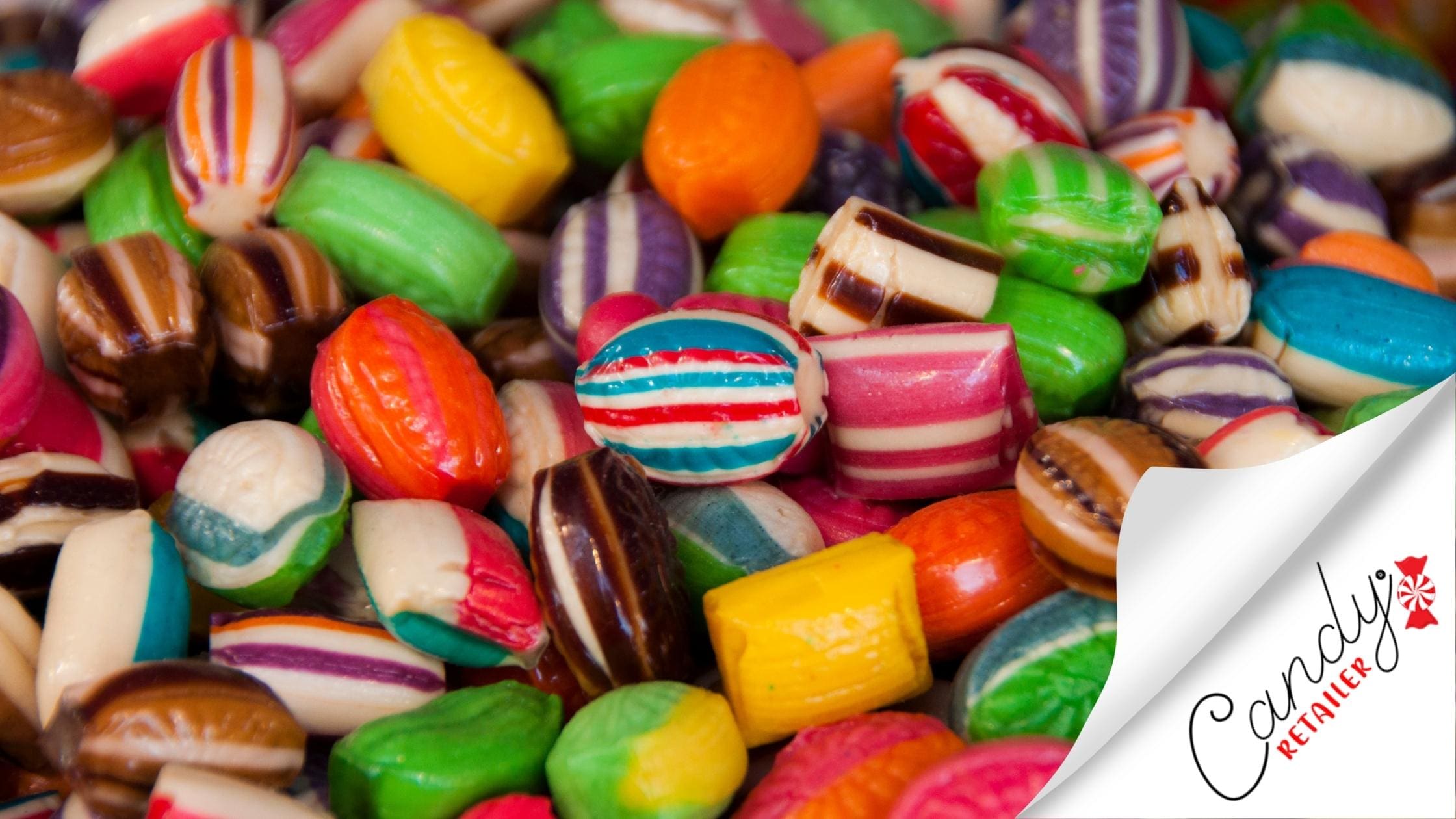
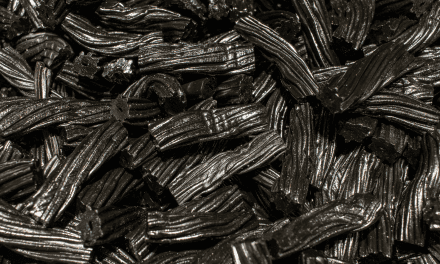
Recent Comments